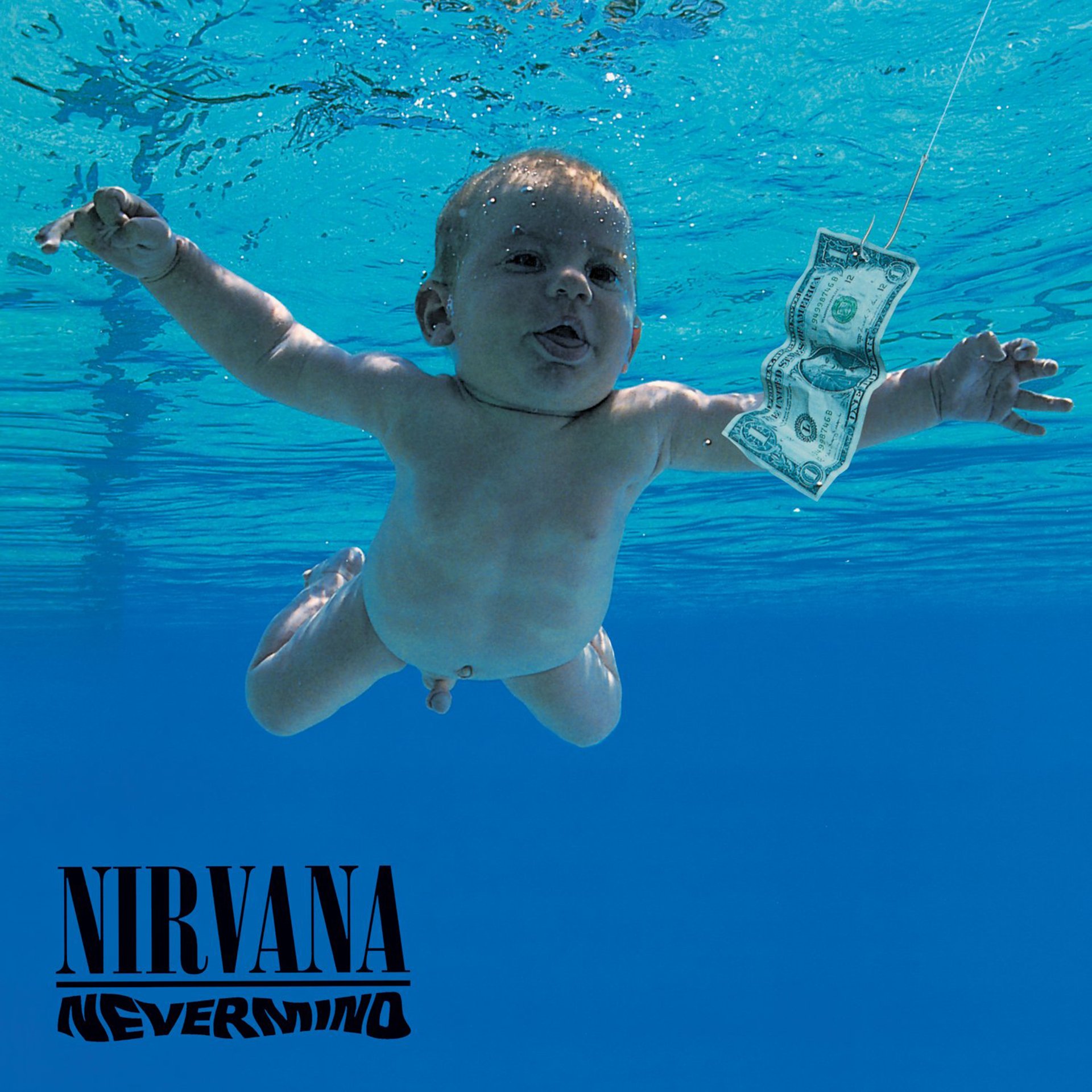Happy 30th Anniversary to Nirvana’s third & final studio album In Utero, originally released September 21, 1993.
The small village I grew up in the early 1990s was populated by gangs of kids who loved heavy metal music. I was one of them. Young teenagers dressed in Iron Maiden, Black Sabbath, Metallica, Skid Row, KISS and Aerosmith t-shirts could be seen hanging loosely on lanky spot-faced youths at the local park and backstreet haunts.
But then something began to change. A few of them started wearing Nirvana and Pearl Jam t-shirts with Doc Martins boots and skinny jeans. These kids seemed somehow exotic and also better educated. I started to drift towards these kids with, hoping they could offer some guidance in my musical tastes. A copy of Nirvana’s 1991 record Nevermind was ripped tape to tape from an older lad who lived up the street and the record became a solid staple on my tinny tape deck just behind cassette copies of Pearl Jam’s Grunge classics Ten (1991) and Vs. (1993).
A confession: In Utero, Nirvana’s much anticipated third studio album was the first record I ever bought. There is a sense of pride in this fact but it comes with an embarrassing footnote. I was fourteen years old; my friend and I bused into town alone and made our way to the independent record store. With my own money, which I had saved for weeks, I picked out In Utero as the first mark of what would hopefully become a serious and seriously good record collection. Of course, this being the early 1990s, I purchased it on cassette tape.
What I often choose to omit from this story was that alongside In Utero, I also purchased Aerosmith’s Get a Grip, an album from which the singles “Amazing,” “Crying” and “Crazy” had been on heavy rotation for a year or so. It was the hangover from being a goofy rocker still clinging to bands like Ugly Kid Joe and Def Leppard. Change was coming. I knew I’d have to let them go someday. My friend decided to purchase a live Iron Maiden record also on cassette.
When we returned home later that day with In Utero and Get a Grip in hand, my first instinct was to go with the newer, more urgent, more now record. I slipped the tape into the deck, hit play, and turned up the volume. I was hit with confusion. The tracks that launched In Utero, “Serve the Servants” and “Scentless Apprentice,” were a clatter of rumbling bass, crunchy distortion and inaudible drawled vocals. What lyrics could be discerned sounded like nonsense (“Electrolytes smell like semen” from “Serve the Servants”). I looked to my friend. We had anticipated headbanging and strutting about some air guitar along to the record. It was not to be. This was not how Nevermind had begun or had continued.
This initial disappointment (or perhaps lack of understanding) could be aimed at the band and their decision to filter out certain quarters of their immense fanbase (the rock-jock, the punk purist) by writing songs that used more abrasive structures. But the accountability for the production utilized, more akin to a simple live recording, must fall to Steve Albini, the record’s engineer. Albini provided no thrills, no clean rendering of the sound, no post-production mop-ups. It was this aspect that destabilized the listening experience. The past had provided clean and polished records that were palatable to consume with ease. Even Nevermind had been a polished affair thanks to Butch Vig’s glossy production.
Listen to the Album:
In my inexperience of music consumption, In Utero offered a first glance at what might be considered difficult music. It was not to be consumed and enjoyed in company as such, but worked out and studied in solitude. This I would learn soon enough.
My friend confessed he wasn’t interested in In Utero and mocked me for wasting my hard-earned money. The record was swiftly jettisoned from the tape deck and for the next couple of hours we listened to Aerosmith and Iron Maiden. Both of these records were comforting to our uneducated ears and offered more traditional rock & roll thrills.
In retrospect, Nirvana’s Kurt Cobain had probably planned this reaction all along. Two typical small town denim-clad metal heads were possibly the kind of dumb casual rocker he wanted to shirk. However, maybe there was another angle that Cobain wished to take with In Utero. Perhaps he wanted listeners to peel back the layers of distorted guitar and inaudible vocals to find a record that wasn’t just a collection of instant pop hits, but a slow reveal.
In a sense, this worked. As the initial thrill of Get a Grip and its tired ilk wore off, In Utero began making appearances on the tape deck at regular occurrences. At first it had to be accessed within the comfort of the record’s more commercial sounding tracks. Starting out with “Heart-shaped Box,” “Dumb,” “Pennyroyal Tea” and “All Apologies” and moving into “Rape Me,” “Very Ape” and “Frances Farmer Will Have Her Revenge on Seattle” seemed to be the easiest way to figure out an entry point into the record. Eventually the more ferocious tracks such as “Tourette's,” “Milk It,” “Radio Friendly Unit Shifter” and “Serve the Servants” began to unbury themselves from underneath their heavy layer of warped abrasiveness. Cobain had always had an ear for a pop hook and these were not absent as such, just concealed from the initial listen.
Listening to In Utero thirty years later there is still a sense of urgency to the record that propels it beyond its scatterbrained bombast production value and obtuse lyricism. Whilst Nirvana’s debut record Bleach (1989)and Nevermind have aged terribly, the latter in particular sounding like it was made by some AI programmed to translate the sound of 1990s rock music into aural form, In Utero has only improved with time and distance. In fact the sparse recording by Albini has left it almost ageless.
Enjoying this article? Click/tap on the album covers to explore more about Nirvana:
The legacy of In Utero is wrapped in the unfortunate events of April 1994, in which Cobain committed suicide. This has left the record sounding like the dark foreboding of a collapsing mind. I would argue that the opposite is true. In Utero is the sound of a band experiencing immense freedom to experiment, to shake off the shackles of so-called rock & roll stardom and re-establish their punk ethos. The record employs so much color and noise, so much layering, so much distraught emotion and intense revelations that it cannot be discounted as anything other than the genuine article.
In Utero is the sound of chaos and the very definition of brittle anger, but it is executed in an almost joyous and cathartic manner. In this sense it is Nirvana’s defining statement.
LISTEN:
Editor's note: this anniversary tribute was originally published in 2018 and has since been edited for accuracy and timeliness.





